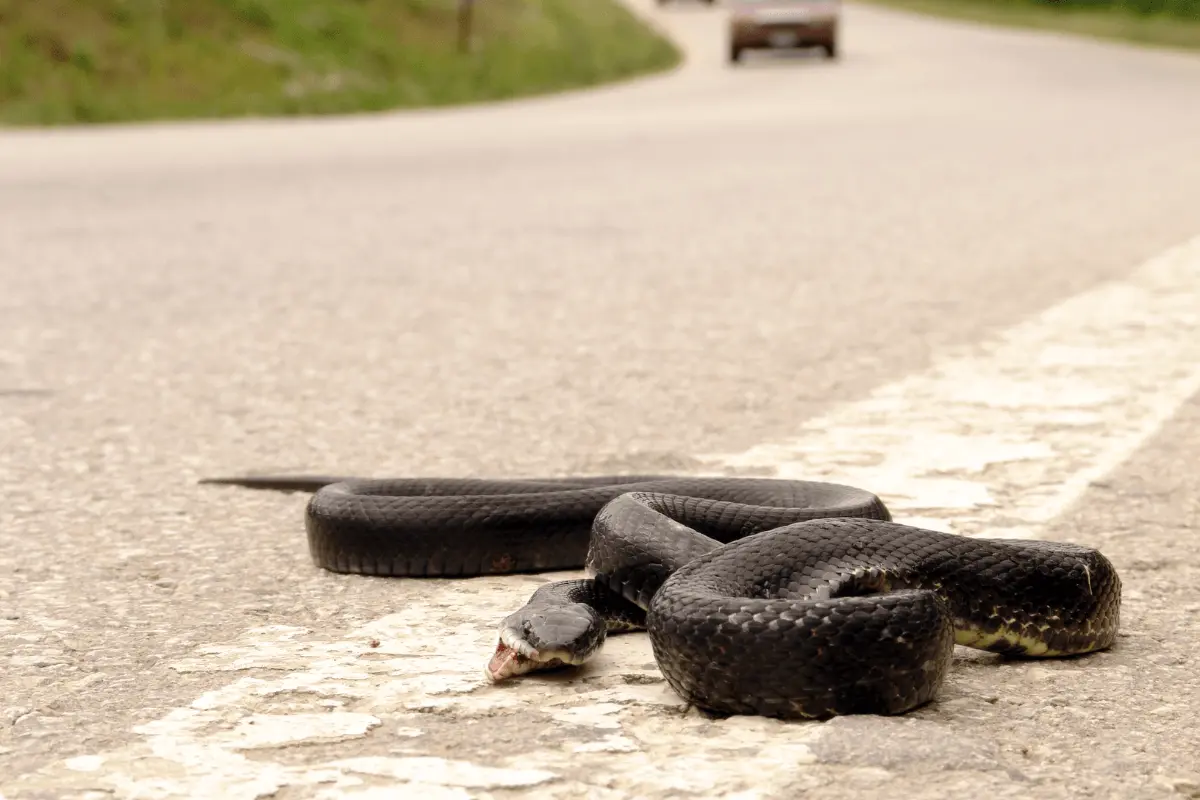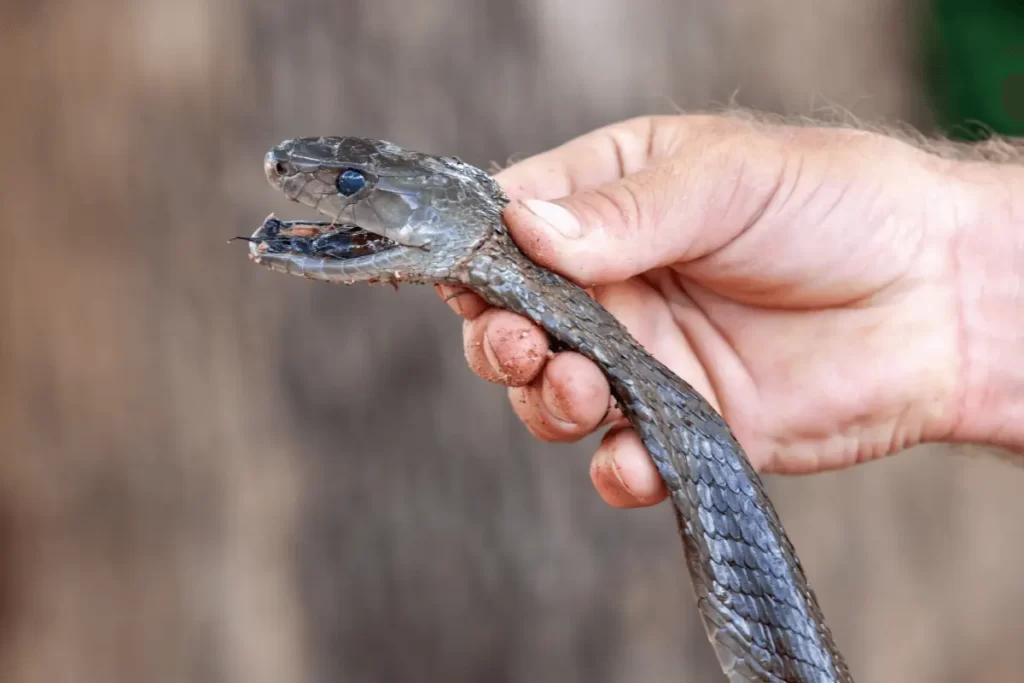Whether you keep a cat, dog, horse, or snake as a pet, losing them is a heart-wrenching experience. If you have a pet and it dies accidentally, the first thing you should do is dispose of it. Now, the question is: what to do with a dead snake?
A dead pet snake can be disposed of in one of three ways: calling a vet, doing it yourself, or having it cremated. Burial is an easy choice, and you can do it on your property with or without the help of a Vet.
Do you want to know more ways to deal with a snake? If so, read the below guidelines to get rid of a dead snake.
What Is the Lifespan of a Snake?
The lifespan of a snake depends on its type and eating habits. Some common snakes are the Boa constrictors, Garter, and Corn snakes. These snakes have a lifespan of 15 to 30 years. Because snakes can preserve energy, they can go for weeks without eating.
If you want to keep a pet snake, you must know that they require special care about its diet, environment, and temperature for survival. Although they need a long-term commitment, you must accept that they will eventually pass away, so you must be prepared to dispose of them properly.
Does a Snake Play Dead?
Yes, a snake fakes its death. Some snakes are dramatic and typically do this when they perceive a threat as a defense strategy. Moreover, some snakes release unpleasant smells while faking death to scare away predators.

Below are some snake species that show this behavior.
- Grass Snake: These snakes are present in England and release a repulsive chemical from their anal gland to deter a potential threat.
- KingSnaKe: This snake fakes death, and before doing so, it shakes its tail against a dry plant.
- Asian Tentacled Snake: This snake attempts to appear dead by stiffening to the point of rigor mortis.
- Hognose Snake: They become shamble while pretending to be dead to confuse and deter their predators.
What Causes Snake Death?
Although poor living condition is the root cause of snake death, below are some most common causes of their death:
- When a snake spends a long time in a wet substrate, it develops a condition called scale rot which may lead to death.
- Sometimes snakes may get a mouth infection called mouth rot. If snakes are left untreated, they may die due to severe infection.
- According to the Veterinary Clinics of North America, respiratory illness causes shortness of breath, mouth swelling, and elevation of the head & neck in snakes, which eventually results in snake death.
- Moreover, sometimes snakes don’t eat properly and die due to starvation.
- Additionally, snakes may also get parasites attack which results in severe blood loss and death.
Why Does a Snake Move After Death?

Although it seems impossible for a snake to move after death, they have a low level of energy and oxygen that causes them to stay alive after death. When snakes are killed and deprived of oxygen, their cells don’t instantly perish because they don’t require much energy.
Moreover, the nerves of the snakes still work after death and respond to stimuli. Additionally, some snakes, like cobras and rattlesnakes, have strong bite reflexes that activate the snake’s muscles after their death. Thus, due to these characteristics, snakes remain active and move after death.
How Do You Know the Death of Your Snake?
As snakes are hardy creatures, they live a long life when you care for them properly. However, if you don’t care about your pet snake, it’ll die due to improper handling. Sometimes snakes make you confuse about their death by hibernating. Therefore you should be aware of the symptoms of your snake death.
Signs and Symptoms of a Snake Death
Your snake will show the following symptoms if it’s going to die.
- Snakes may show behavioral changes near death. It starts hiding and avoiding populated areas.
- You may notice significant weight loss and food refusal in your snake.
- If your snake starts to gasp for air or wheeze, it may have a respiratory infection, which means it may soon pass away.
- Snakes naturally peel off their snakes; if they can’t do so, they will perish.
- Bloody stool is another sign of your near-dead snake.
- Additionally, dehydration is another problem in snakes. So, it could also be a sign that your snake is dying from greater intensity.
- Moreover, you may notice an ambiguous fluid discharge from your snake’s nose.
Does a Snake Die Suddenly?
Yes, a snake can die suddenly for various reasons. Most commonly due to unhygienic environmental conditions. Some of the reasons for the snake’s sudden death are given below.
Reasons
- The temperature of the cage: Extremely hot or cold cage temperatures can impair your snake’s immunity and cause digestive problems, and suddenly lead to death.
- Size of the cage: If you keep your snake in a confined and congested cage, it may die due to shortness of breath.
- Severe infections: Sometimes snakes may catch severe infectious diseases like scale or mouth rot and may die.
- Toxicity of fumes: Toxic fumes from eucalyptus, cedar, etc. may also cause the sudden death of snakes.
- Aging: Another cause of snake death is old age. Normally, an average snake can live 13 to 18 years. After this age, a snake may die suddenly anytime.
What Separates a Dead Snake from a Brumating Snake and a Sleeping Snake?
Many snake owners mistake a sleeping snake for a brumating or a dead snake, which may seem surprising. To differentiate them, you must know the following differences.
- Brumating Snake: Snakes seek refuge in cold weather and undergo brumation for warmth. During this period, they lay motionless, and if they have to move they” ll do it slowly. Additionally, they don’t prefer eating at this time.
- Sleeping Snake: Snakes use sleeping as a trick to hunt their prey. They won’t attack if you try to get close to them when they’re resting. While brumating, snakes remain motionless when touched, whereas when you hit them during sleep, they become active.
- Dead Snakes: A dead snake gives you no response at all. So, if you pick them up, they” ll not coil around your arm but rather remain flattened.
Can a Dead Snake Bite You?

Yes, a dead snake can bite you. The ions in a snake’s nerve cells provide the energy for post-mortem movements after it dies. The channels in the nerve of a freshly dead snake will open up in response to stimulation, allowing ions to travel through.
As a result, an electrical impulse is produced, allowing the muscle to perform a reflexive movement, like biting. Moreover, biting is one of the reactions for deadly snakes like cobras and rattlesnakes that can still be engaged in the brain hours after the animal has passed away. Therefore, you should beware while dealing with a dead snake.
How Do You Dispose of a Dead Snake?
Even though dealing with a dead snake is a difficult task, you can make it simple using the steps below.

Take Help from a Vet
Even if you adore your pet snake, there may be times when it just feels too much to bear to get rid of a snake on your own. The simplest thing you can do is ask for help from a veterinarian to discard your dead snake.
Frequently, the veterinarian will take care of the body for you when you bring your pet down. Moreover, They might decide to cremate the snake or arrange for its burial in a pet cemetery.
Bury the Snake
Another way to dispose of your snake is to bury it. For this, you can either take help from a vet or arrange it yourself. If you want to bury your snake, you can find the closest pet cemetery close to your home by doing some research. After buying a small plot, you can bury your snake there.
However, burying your pet snake in a cemetery can be a bit expensive. If you want to save $1500, you should bury your snake on your property.
Burn or Cremate the Snake
Burning or cremation is another choice to ward off dead snakes. After cremating your snake, either scatter your snake’s ashes over a broad region or preserve them in a jar in your house. It is not simply a well-liked way to honor your snake but also an emotional and heartfelt one.
The main drawback to cremation is that it can be very pricey. The typical price range is $50 to $150, although, in other locations, it may even be more expensive. If you can afford this price, you should go for this option surely.
Throw the Snake
It is one of the easiest ways to dispose of your snake. When your snake dies, you can throw it far away from your house. For doing so, you should first inspect the area where you want to throw your snake. Toss it in an open place where other animals eat it.
Moreover, you should throw your pet snake at a distance by wrapping it in a plastic bag. It is essential because if your snake is sleeping instead of dying, it may attack other animals or houses.
Use Some Natural Ways
You can also use some natural ways to dispose of your snakes. The most typical option is to compost your dead snake’s body. While it might seem inhumane, doing so is a meaningful and environmentally friendly way to say goodbye to your dead snake. Remember that you need proper planning to compost your dead snake.
To compost your dead snake, place 2 feet of straws in a row, now lay the dead snake on it. After that cover the snake with the same base material. Now cover the entire pile, with any cover material like straws or hays.
Use a Sanke Funeral Service
You can bury your snake using “pet funeral services”. They offer the same funeral services as humans. Typically, they offer urns, jars, and caskets for sale. Moreover, they provide you with burial markers and memorial stones. A pet funeral service may also help you find a cemetery for the burial of your dead pet snake.
Aside from that, they can transport the decomposing remains of your snake. Many will lend a hand in organizing a memorial service for your pet.
Bottom Line
Although snakes have an extensive lifespan, they may die due to improper handling or any disease. However, before disposing of a dead snake, you should know whether it’s sleeping, hibernating or dead.
And if you discover your snake dead, properly dispose of it by burying it outside your home or in a suitable location with the assistance of your veterinarian. Moreover, you can also cremate your snake or use some natural ways to discard it.
Above all, call a professional snake handler to remove a dead snake to protect yourself from danger.
FAQs
References
Jessica R. Comolli, Stephen J. Divers, Respiratory Diseases of Snakes, Veterinary Clinics of North America: Exotic Animal Practice, Volume 24, Issue 2, 2021, Pages 321-340, ISSN 1094-9194, ISBN 9780323778497, https://doi.org/10.1016/j.cvex.2021.01.003.

